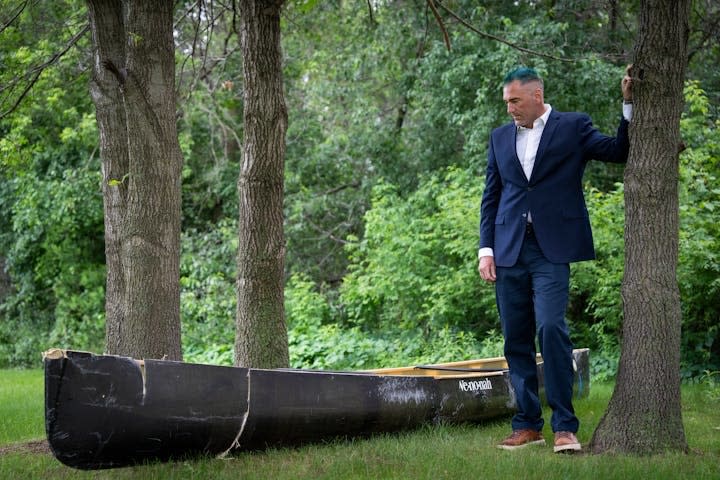Yes, you need to wear a life jacket

Opinion editor's note:Editorials represent the opinions of the Star Tribune Editorial Board, which operates independently from the newsroom.
•••
"Life jacket: worn — no."
"Life jacket: worn — no."
"Life jacket: worn — no."
"Life jacket: worn — no."
"Life jacket: worn — no."
So far, five people have lost their lives boating this year in Minnesota. Sadly, this grim phrase is repeated five times in the state's official summary of the circumstances leading to each untimely death, a reality that ought to give Minnesotans pause with the rest of the summer still ahead.
It's still early in the state's boating season, but the death toll is off to a fast start, potentially a consequence of the state's rainy spring. Just three such deaths were recorded by this time in 2022 and 2023.
All who died had some things in common. They were all males — one teen and four adults. All died by drowning, with four of the five paddling a canoe or kayak. And as the state death summary reports, none was wearing a personal flotation device, although in three of these tragedies, such lifesaving equipment was onboard.
It's easy to think on a sunny day on the water that having one nearby will suffice. Clearly, this isn't good enough when an emergency happens and seconds count.
The higher death toll as summer gets underway is a sobering reminder that a beloved part of life in Minnesota — enjoying our abundance of lakes and rivers — comes with a serious risk: drowning. The Star Tribune's harrowing story about how a recent Boundary Waters trip turned tragic underscores this, and serves as a reminder that even experienced wilderness hands can run into trouble on the water.
This year, the wet weather is good reason for boaters to take additional care and precautions, according to Lisa Dugan, a Minnesota Department of Natural Resources outreach coordinator for boat and water safety. That includes wearing a life jacket, no matter your age or swimming ability.
"The life jacket message is a very important one, especially with all the rain we've been getting and high, swift moving water increasing dangers for boaters and paddlers," Dugan said in an interview with an editorial writer.
While Minnesota children under the age 10 are required to wear a life jacket, adults can choose not to do so. Minnesota law does require one U.S. Coast Guard-approved life jacket for each person on board. But as this year's boat-related deaths show, accidents can happen and having one nearby does not provide the same protection as wearing one.
An accidental drowning can happen whether you're enjoying a canoe or cabin cruiser, if you fall in unexpectedly, dive in deliberately, if you're an experienced boater or just a landlubber out for an afternoon cruise on a friend's pontoon.
Nor is being a good swimmer a guarantee of safety, according to Dugan. You could be knocked unconscious when falling into the water, for example, be intoxicated or sustain other injuries that make it difficult to swim.
Or you could come across something called a "strainer." It works the same way as the kitchen implement used to separate pasta from boiling water. As Dugan explained, this is an object, like a downed tree, that water rushes through but one that also prevents other objects, such as a boat or canoe, from doing the same thing. That can trap boats and people against or under the hazard. High water conditions and fast currents can make strainers especially perilous.
The DNR understandably recommends that everyone out on the water wear a life jacket. Dugan points out the many advantages. A life jacket buys time for rescuers to provide assistance if someone falls in. It can keep those unconscious or injured afloat.
"Even the best of swimmers can get into bad situations," she said. "If you fall overboard and hit your head on the way out, if you don't have a life jacket you don't have a chance to keep your head above the water."
For those still reluctant to wear one, Dugan points out that manufacturers continue to improve life jackets, making them more comfortable and tailoring them to a specific activity to further enhance that quality. For example, many anglers wear an inflatable life jacket, one that looks like a horse collar, that allows them flexibility and movement. Some of these models automatically inflate when immersed in water.
No matter your choice, "The best life jacket is the one that you actually wear," Dugan said.
For more information about Minnesota life jacket regulations and advice on selecting one, go to tinyurl.com/DNRlifejacketinfo or tinyurl.com/DNRLifeJacketDetails.
